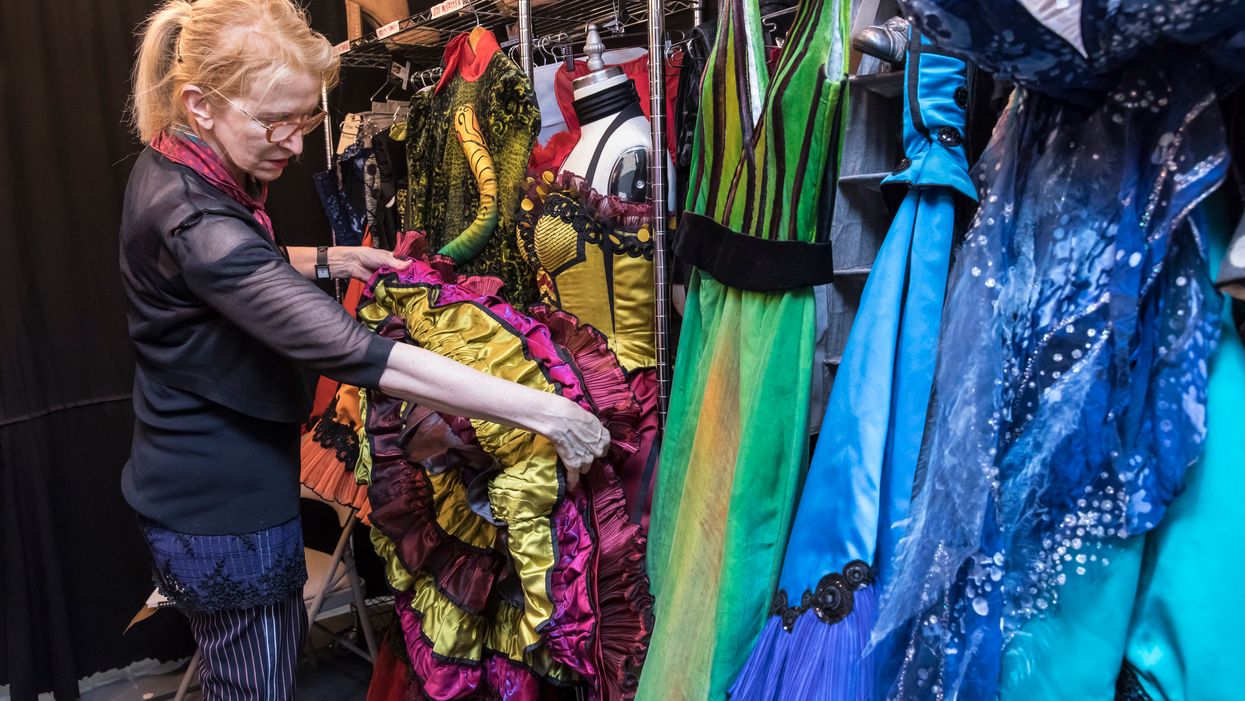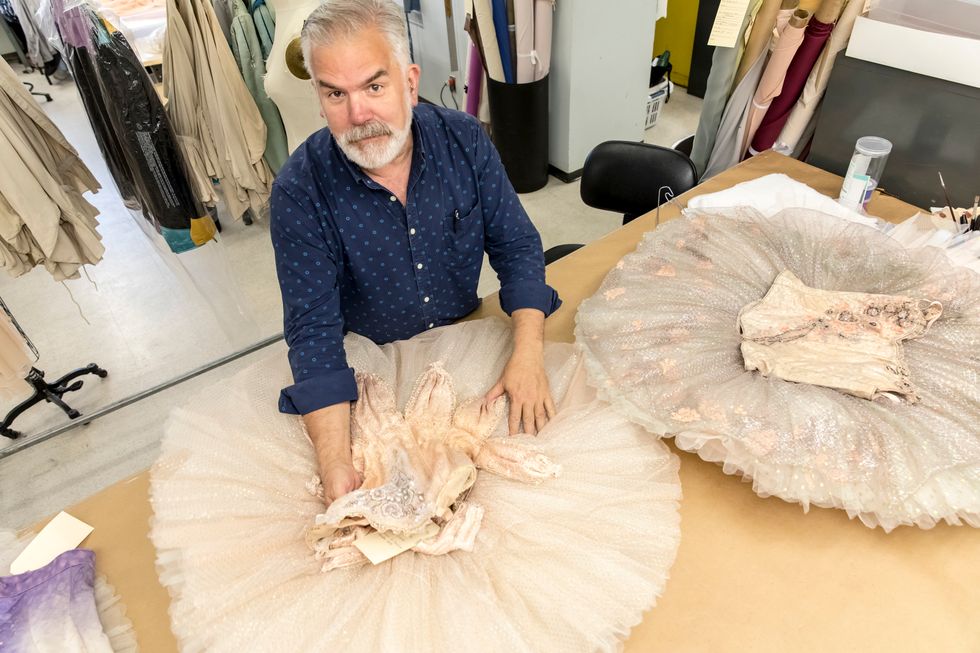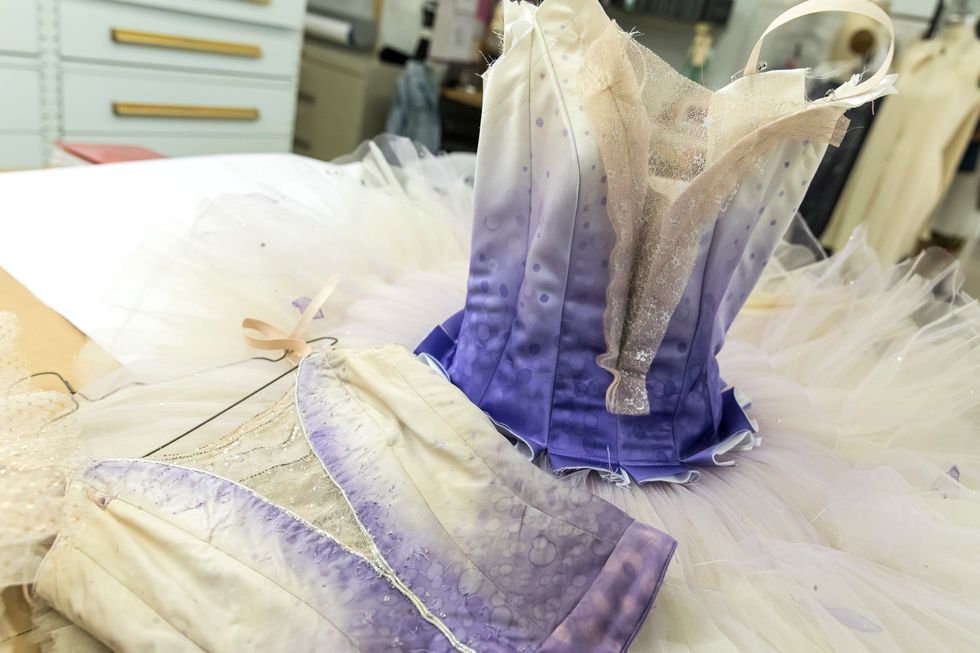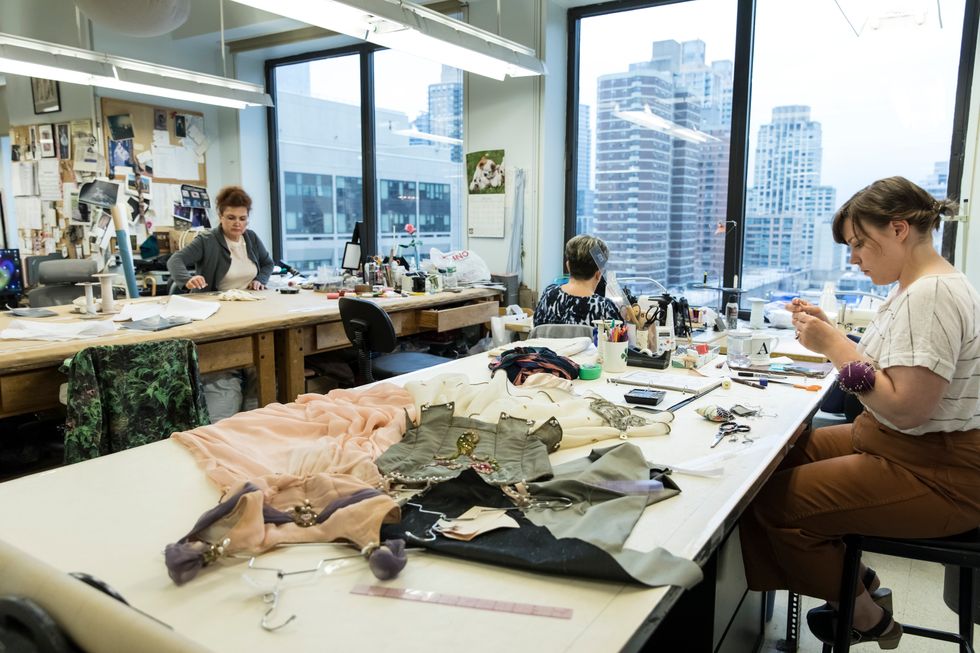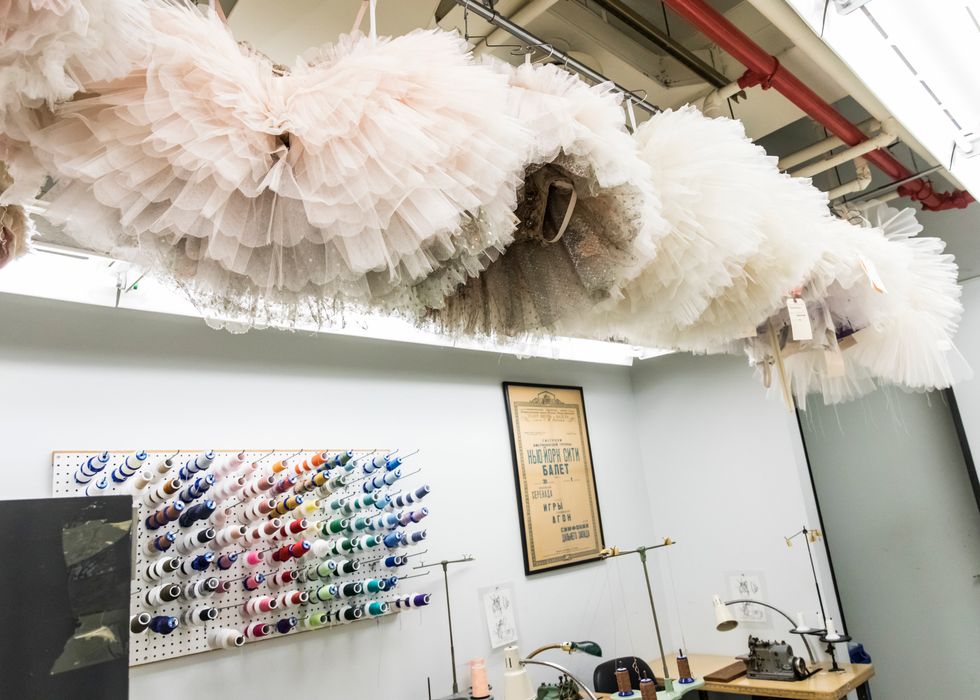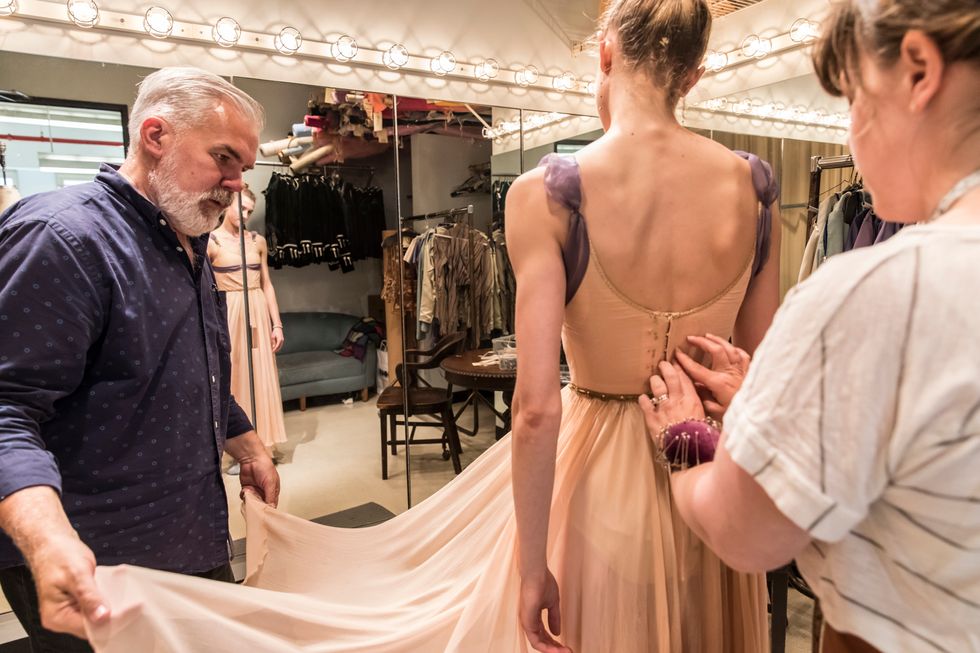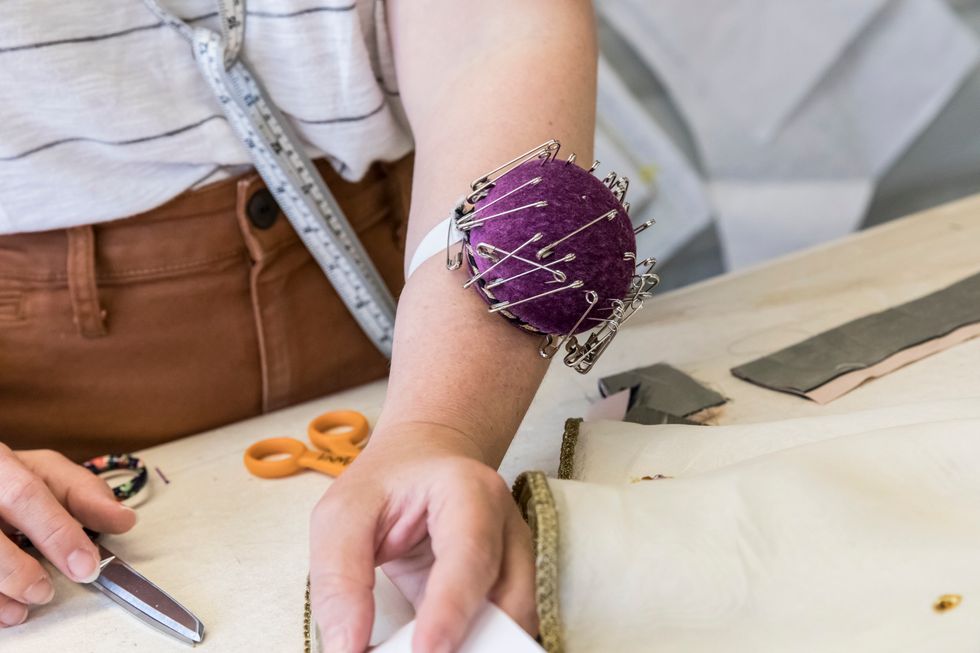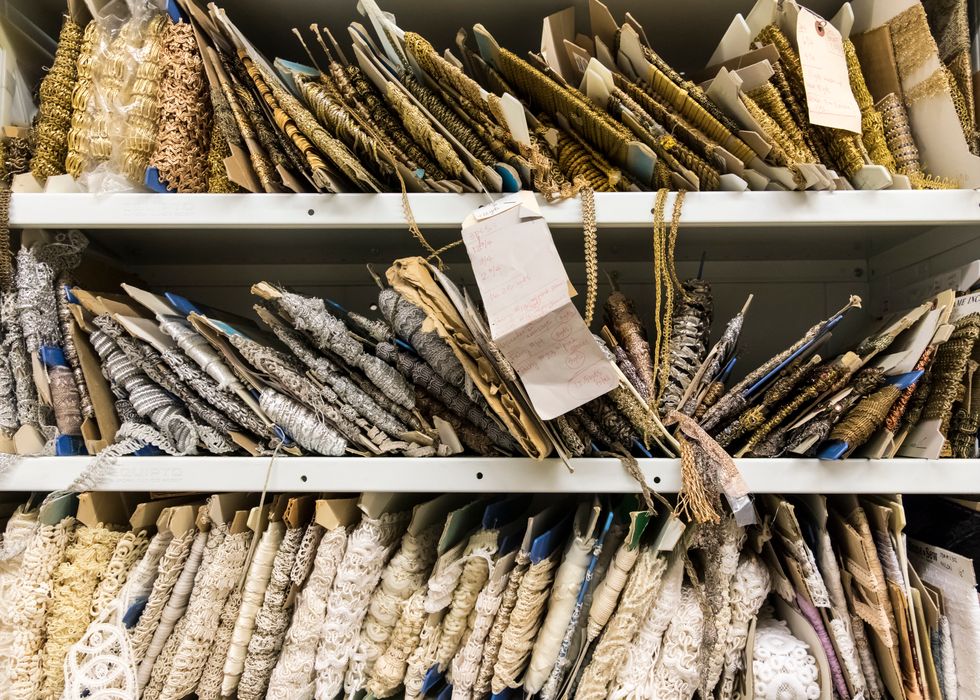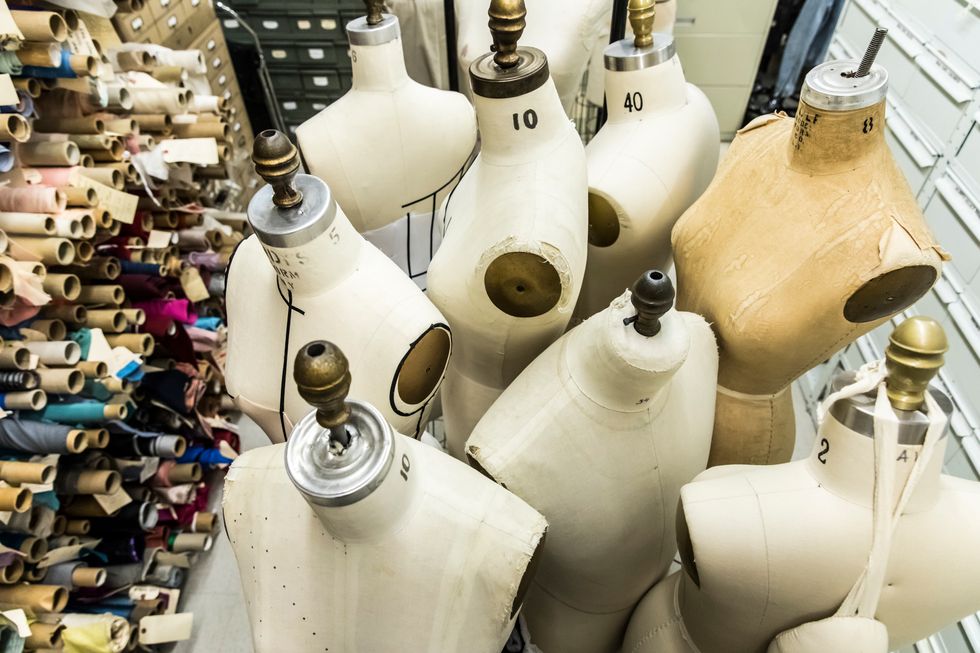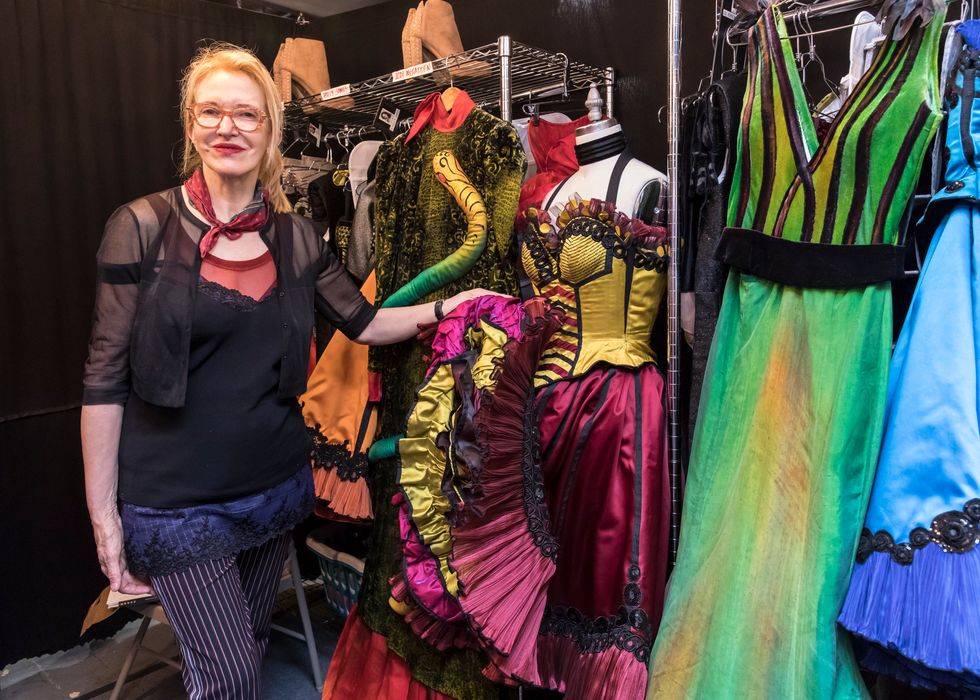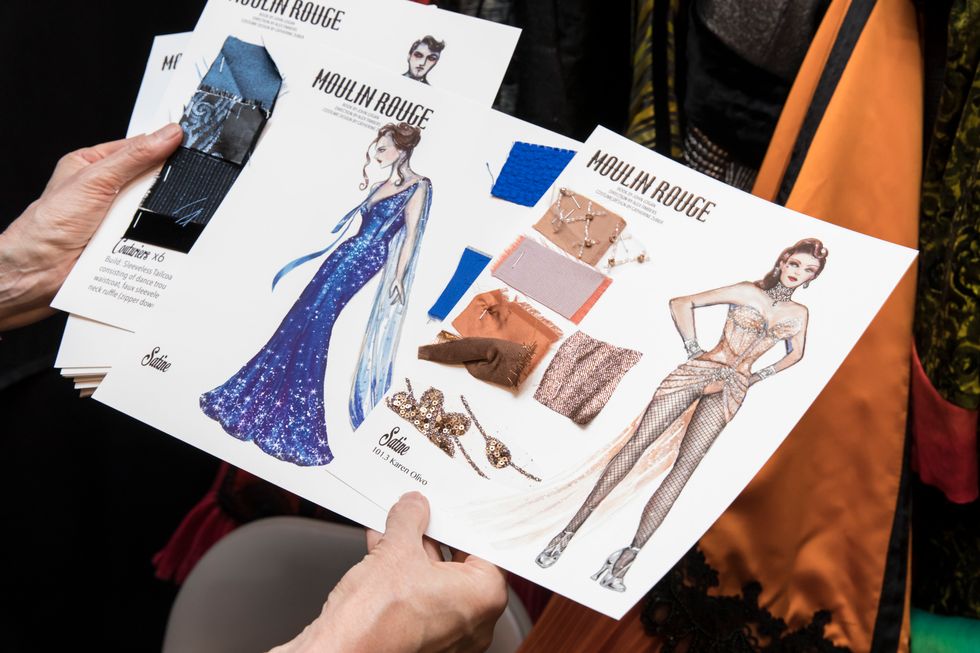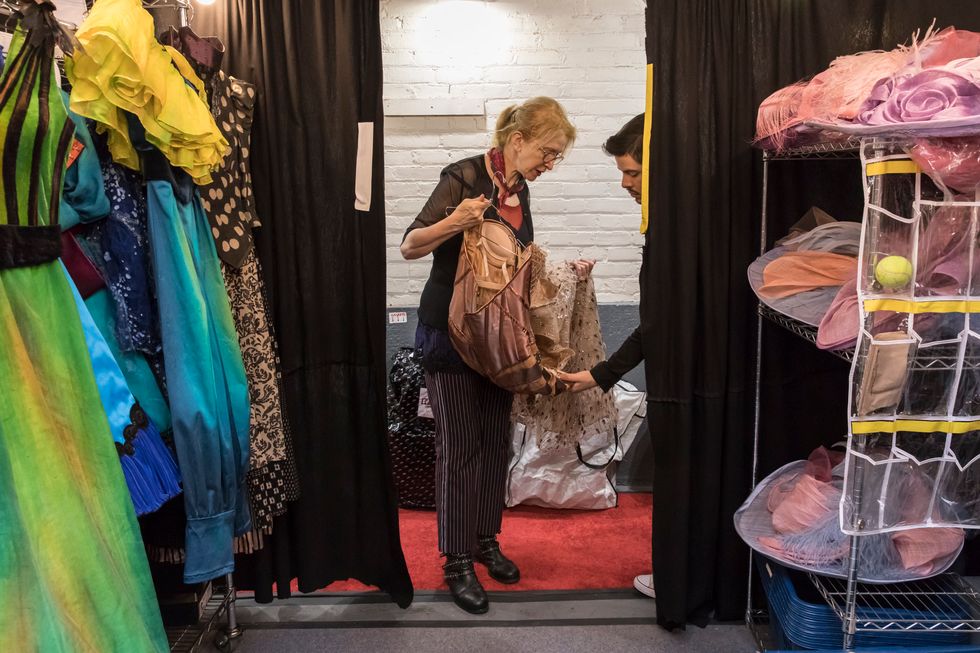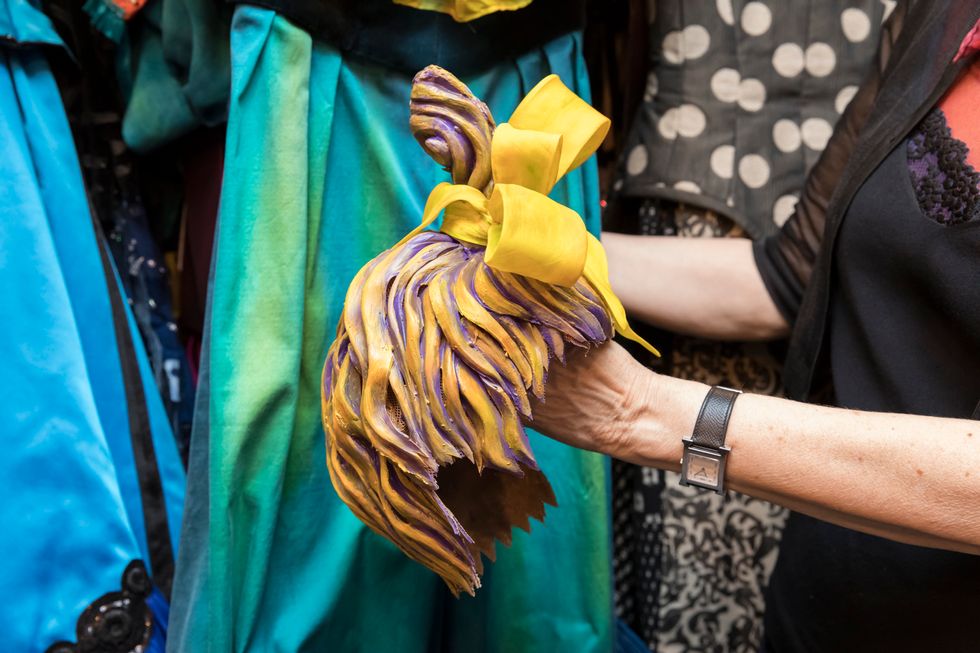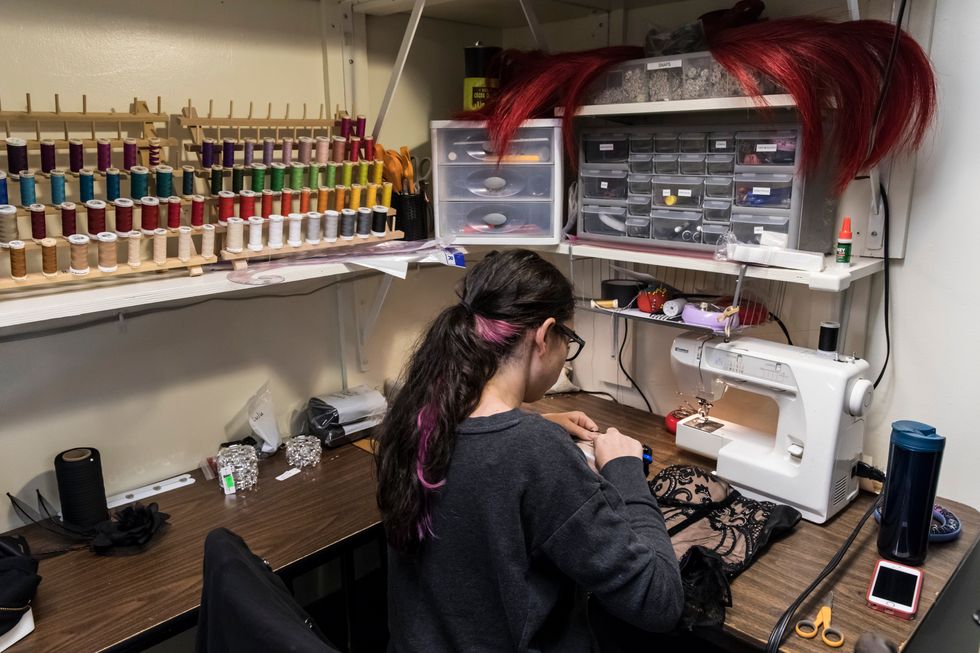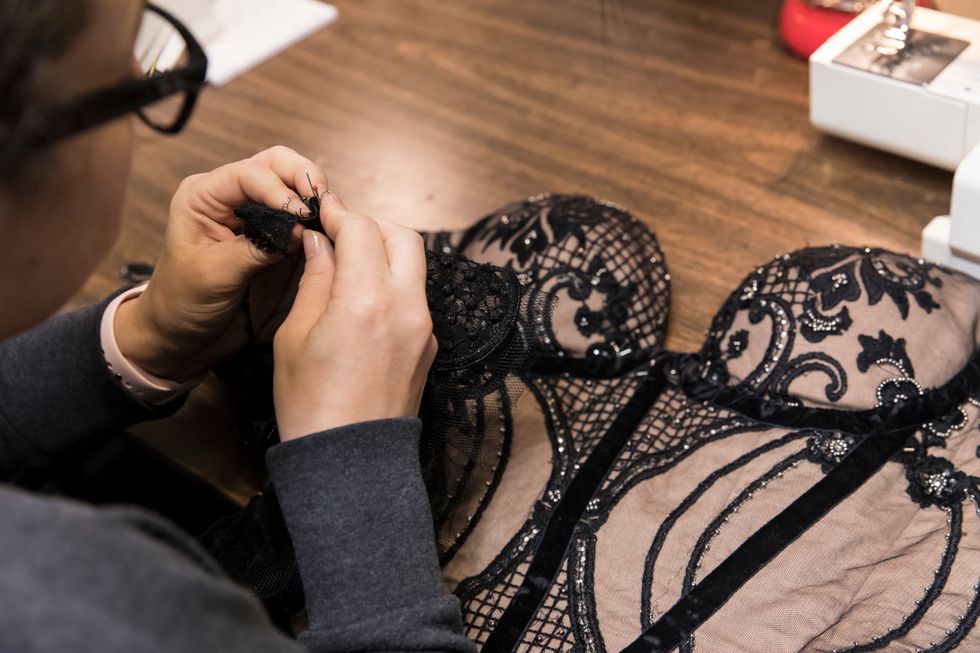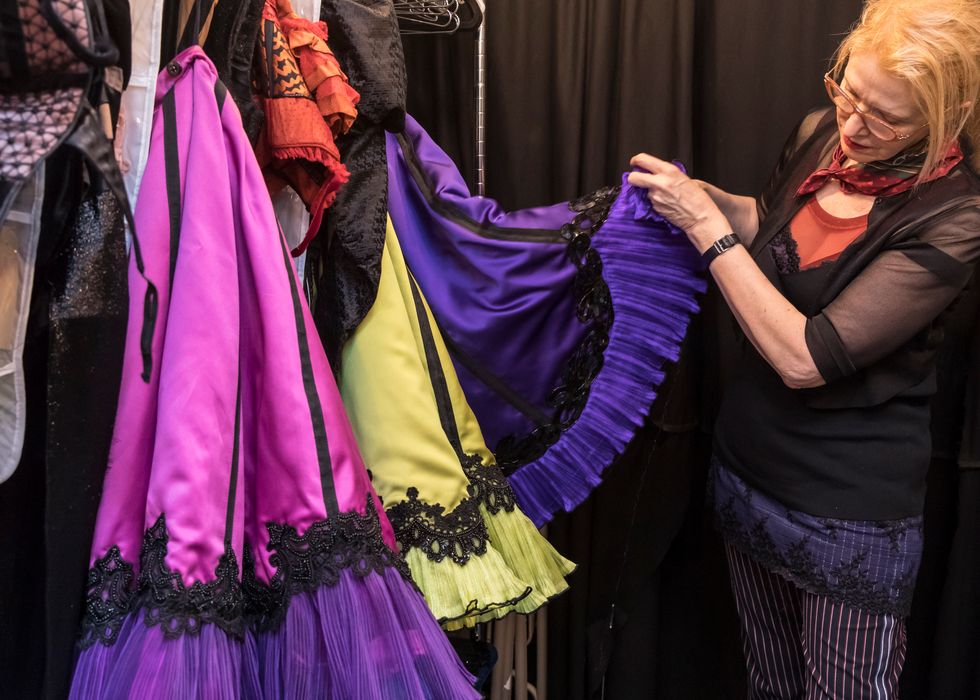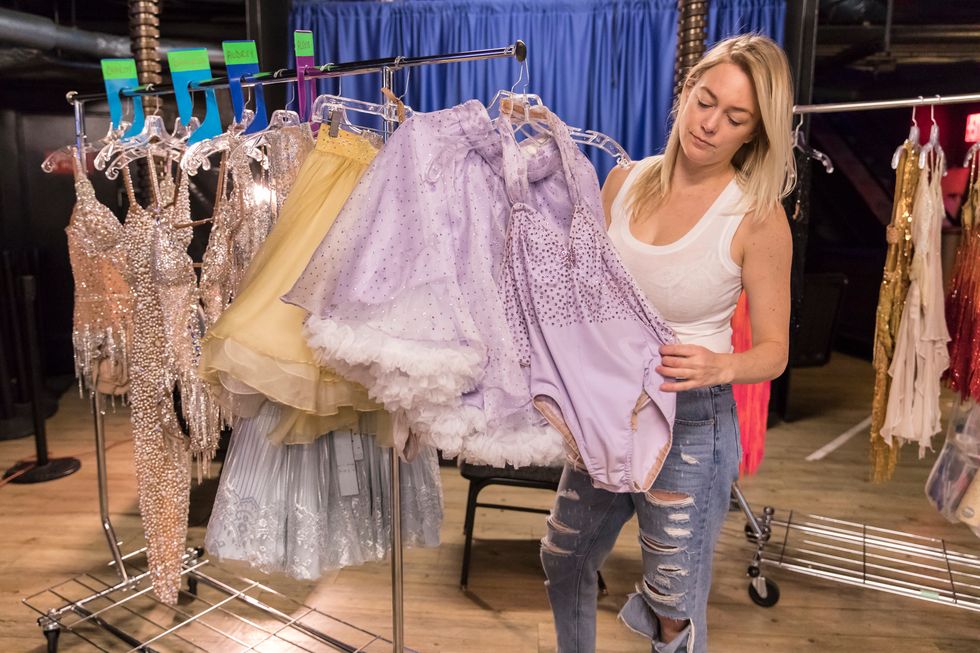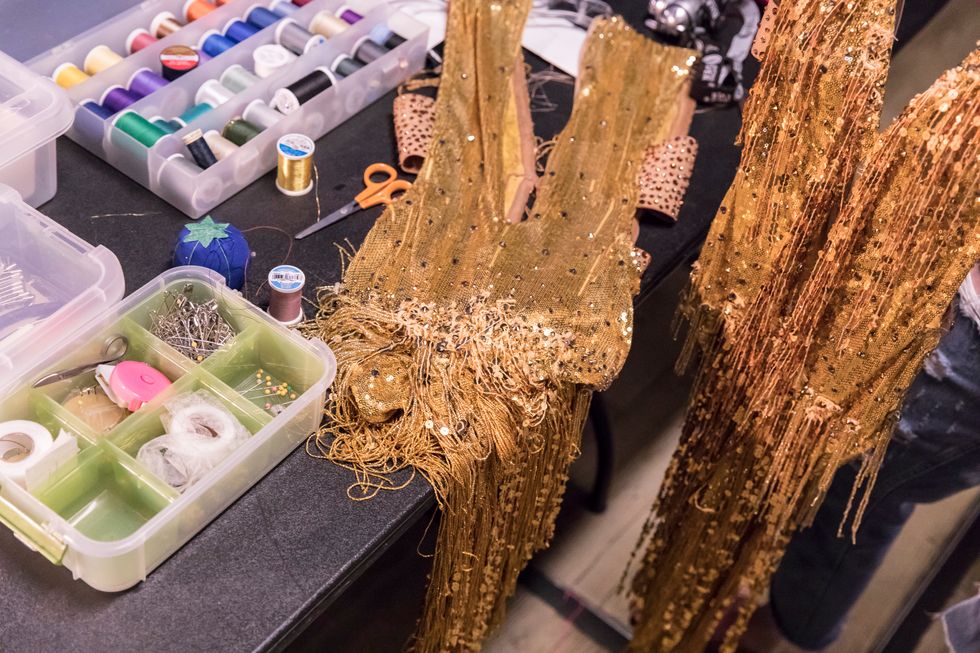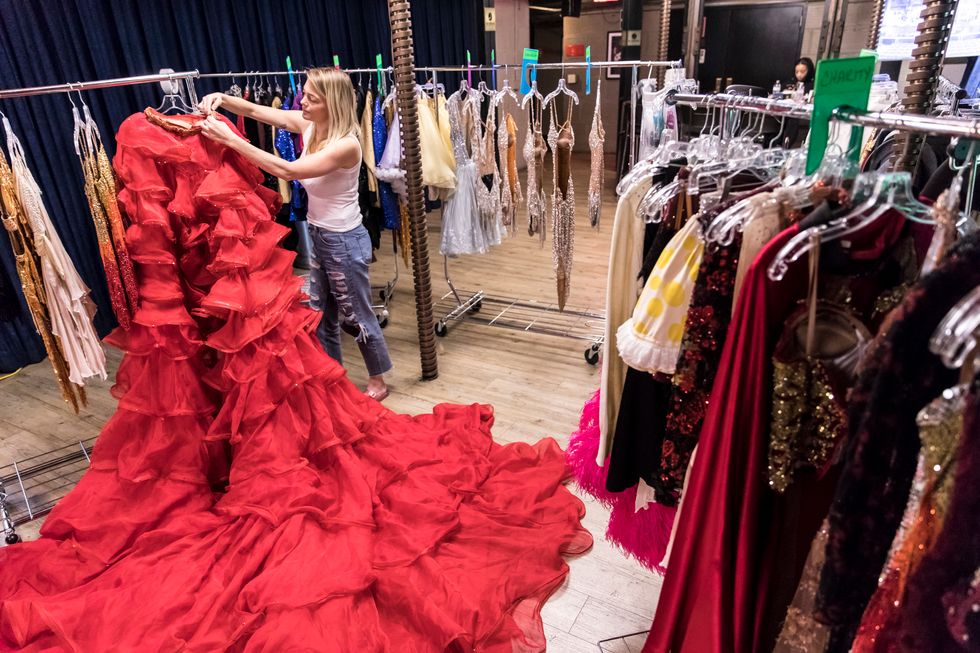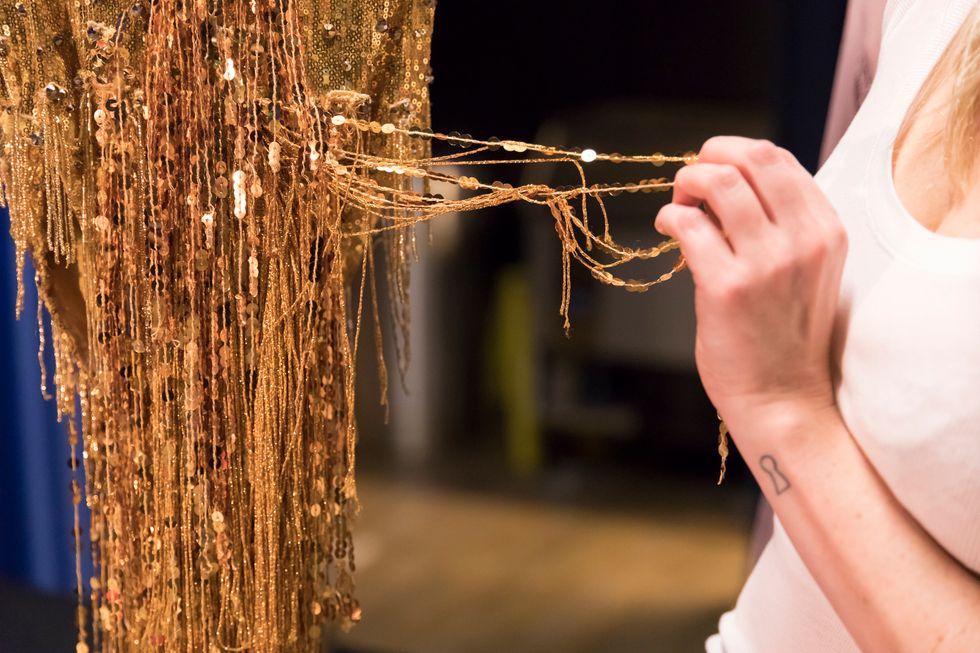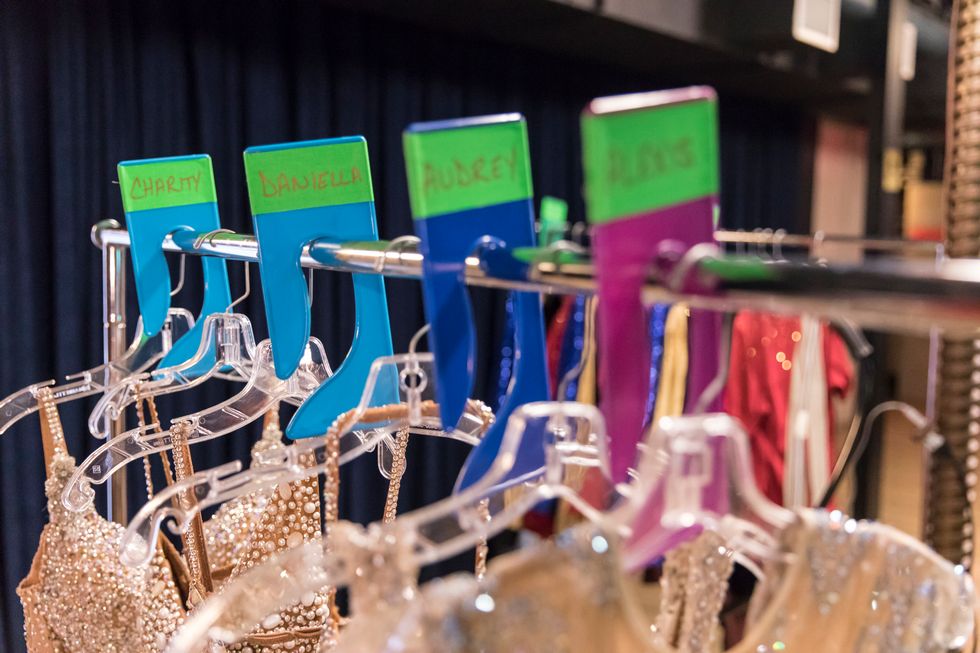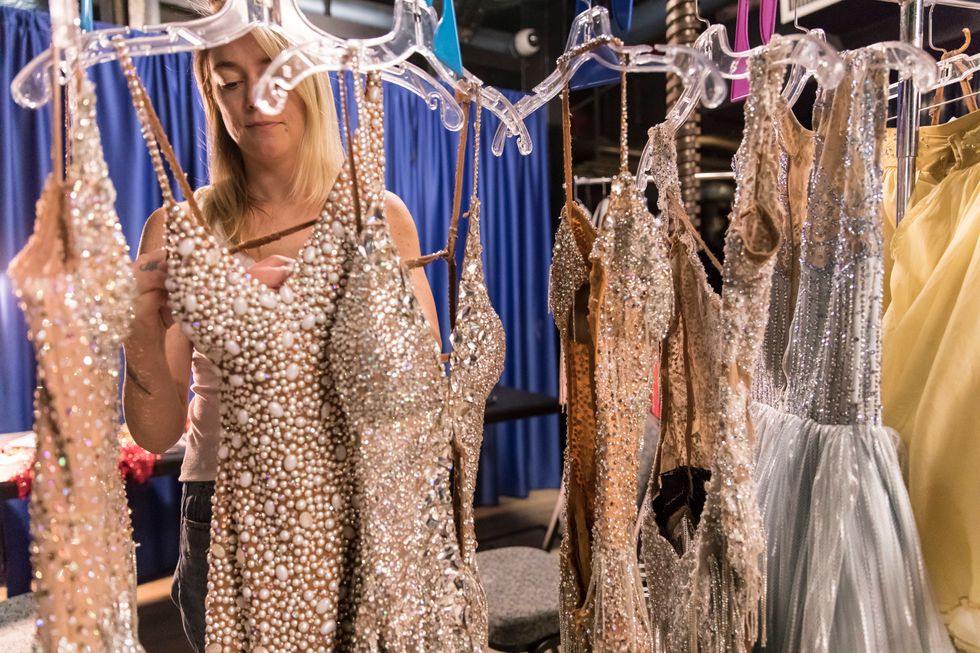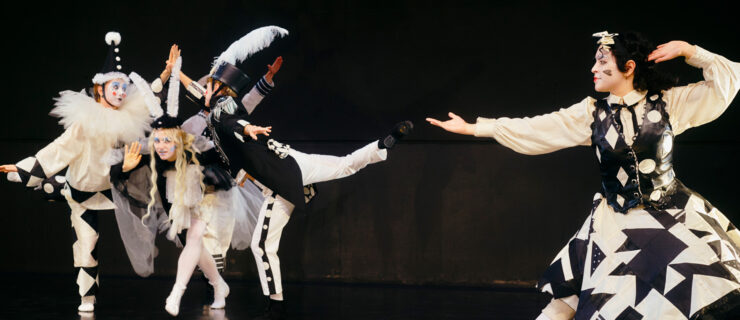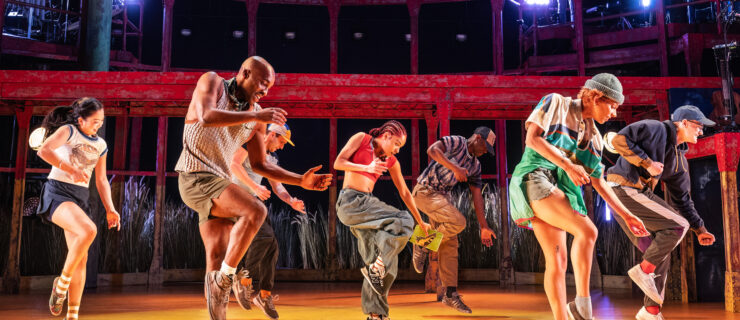Peek Inside Three Major Costume Shops of Ballet, Broadway and Ballroom
In much the same way that choreography and performance create a storyline, costumes can transport an audience into a certain mood or time period with fabrics alone. Three costume departments gave us an inside look at how they prep for ballets, Broadway shows and performances on the road.
Marc Happel, Director of Costumes at New York City Ballet
Key responsibilities:
“I oversee a costume shop of 18 people that produces all of the costumes that are used for NYCB. It’s a juggling act between keeping the repertory looking as close as possible to how it did on the day it premiered, and working with new designers who are creating for new ballets. One of my biggest jobs is to make sure the dancers are happy—to make sure the costume isn’t affecting them in any way so all they’re thinking about is the choreography.”
Fall fashion gala:
“I start working on the fall gala in the spring, helping the choreographers to choose a designer. Then I work very closely with that designer to make their designs danceable. It’s two different worlds, the runway versus the stage. They need to incorporate stretch fabrics and consider things like how the harsh stage lighting changes the way colors appear.”
Maintaining pieces of history:
“My biggest challenge is keeping the original costumes from the ’40s, ’50s and ’60s looking fresh. Some of those fabrics no longer exist, or they don’t come in the same color palettes. So we’ll work with the ballet masters who danced with Balanchine, dyeing fabric ourselves or, on rare occasions, working with companies in Europe that will weave fabrics for us in the color we want.”
Catherine Zuber, Costume Designer for Moulin Rouge! The Musical
From sketching to stage:
“I started two summers ago, meeting with the director and creative team to talk about their vision for the show. I read the script and did character breakdowns to give them an arc of who they are when we first see them, who they become and how they relate to the other characters. In a show like this, where it’s very dance-heavy, it’s about coming up with designs that reflect time and place, but also support the choreography. Once the sketches are done, we decide on fabrics and start fittings. During tech rehearsals, my day starts at 10 in the morning, and we’re here until midnight, putting all of the elements together—music, choreography, lighting, how the set functions, where the quick changes happen.”
Finding inspiration:
“I looked at a lot of photographs of the Belle Époque in Paris. There’s a section in the show that’s a production that was put on by Toulouse-Lautrec, so I re-created characters from his paintings. Those costumes are hand-painted, and even the wigs are made of rubber so that from head to toe, the actors look like they’re a painting. I also took inspiration from John Galliano’s 2006 couture collection for a dress Karen Olivo wears as Satine. Galliano took elements from specific time periods, deconstructing them and reinterpreting them in a brilliant way that I find quite inspirational.”
Making period pieces wearable:
“We need to make sure people can get in and out quickly. In the past, corsets would have hooks and eyes, but ours have hidden zippers. A lot of the dancers wear a very flexible corset with stockings, high gloves and heeled boots. It’s totally moveable. We also have to build things for durability, especially for the chorus when they’re doing dance-heavy numbers—the costumes need to hold up for eight shows a week, but they can’t be too heavy.”
Derek Hough Live! The Tour Costume and Wardrobe Team
Preshow prep:
“I’ve known Daniela for almost 20 years, and Derek for 15 years now. We all worked together on ‘Dancing with the Stars.’ For this tour, I focused on Derek and the men in the ensemble, and Daniela designed costumes for the women. We did all of our meetings, fittings and work with the tailor shops in Los Angeles, and then we were there for the tech in North Carolina to handle any last-minute changes.” —Steven Lee, costume designer
Design challenges:
” ‘Dancing with the Stars’ is so different from designing for the stage. TV is close up, so you have a tendency to want to tone it down a little bit so that it doesn’t look too crazy. Onstage, you need more rhinestones or something to make it ‘pow.’ My biggest challenge with touring is the quick changes. You know they’re going to happen, but until you get to the stage and run the show, you don’t really know what that minute will get you.” —Daniela Gschwendtner, costume designer
On the road:
“I worked with Daniela and Steven pre-tour to maintain their vision, and then with Derek directly on the road to make sure he was happy with everything. We cleaned and repaired costumes, which mostly involved replacing zippers and re-beading and re-rhinestoning. The quick changes were probably the most stressful part. We had a little room underneath the stage where Derek changed, so the location of his quick changes stayed the same, but for the ensemble, it changed every time we got to a new stage. You have to be able to see all of the details like zippers, hooks and eyes, and laces on shoes, so we wore head lamps. We looked ridiculous.” —Josie Day, wardrobe supervisor
